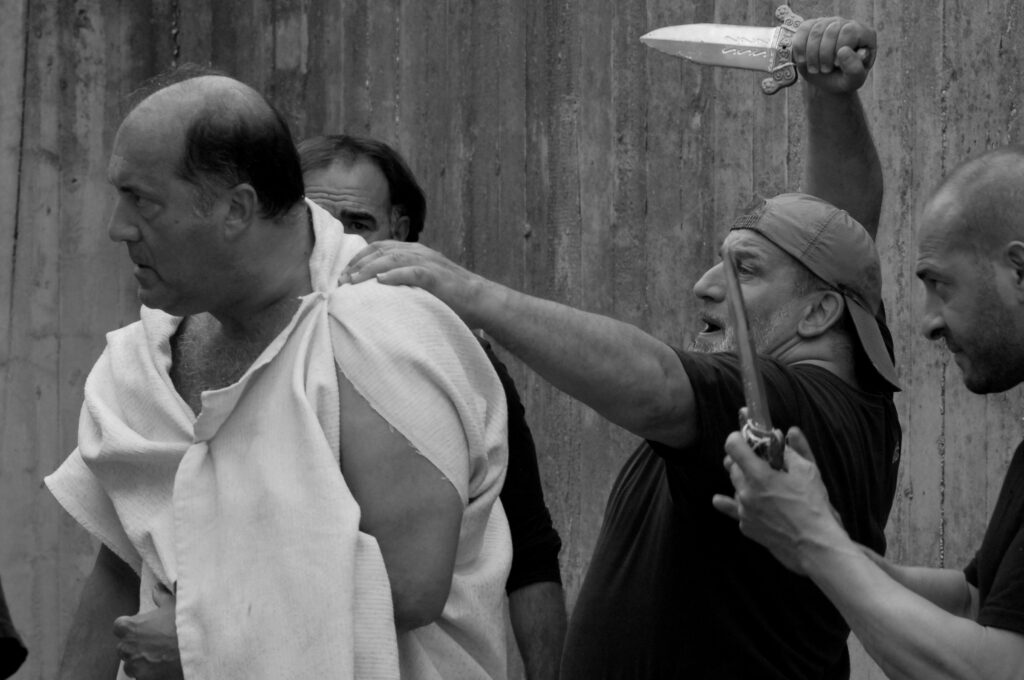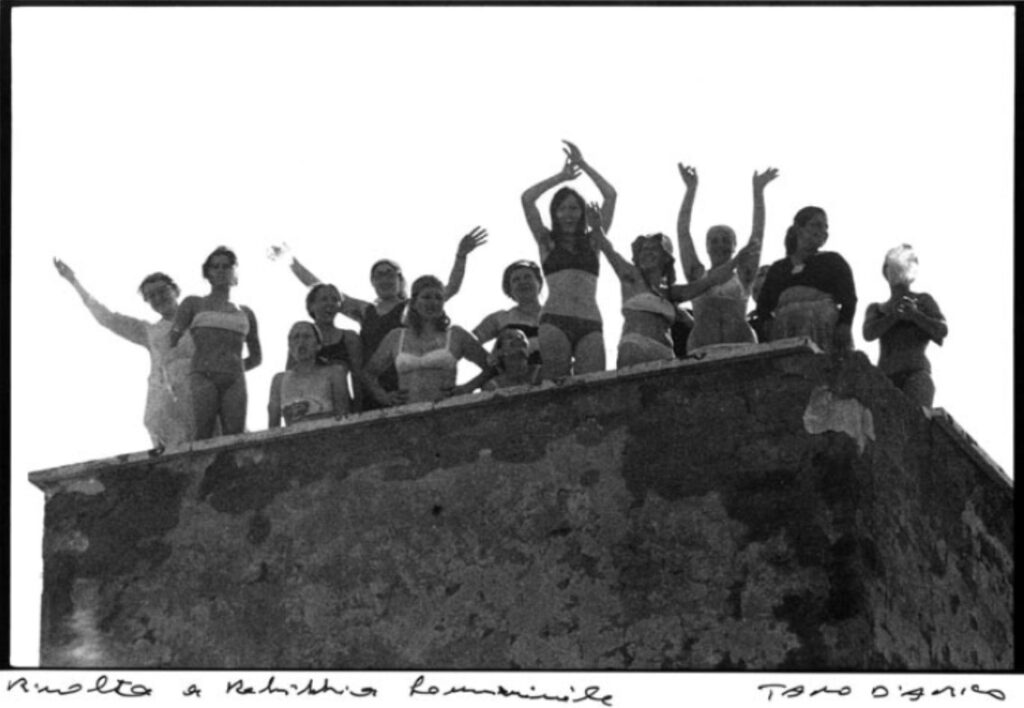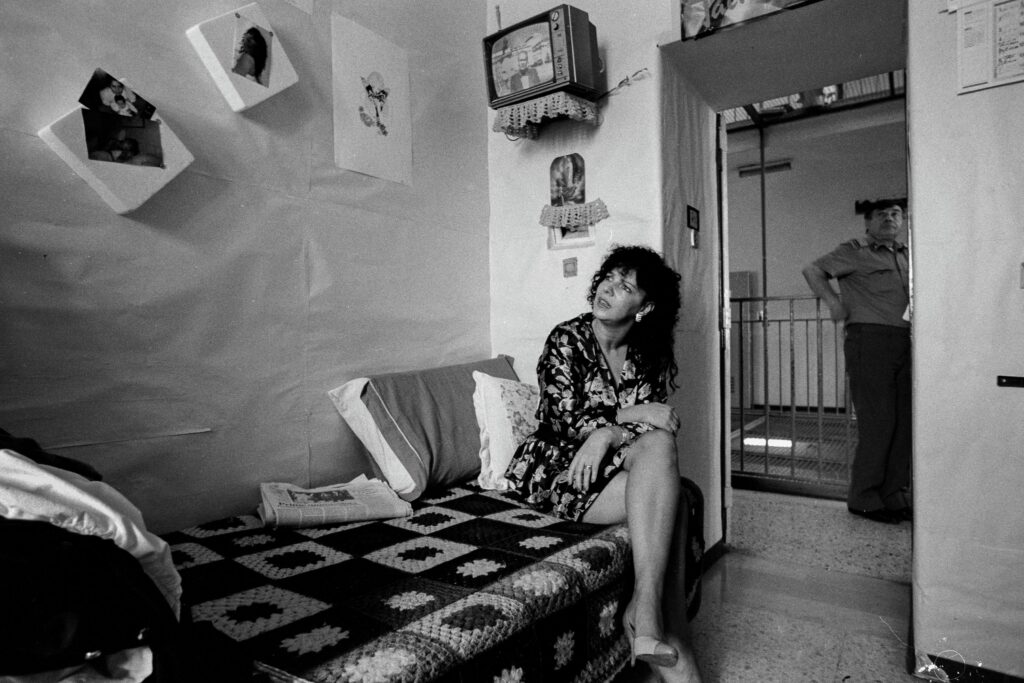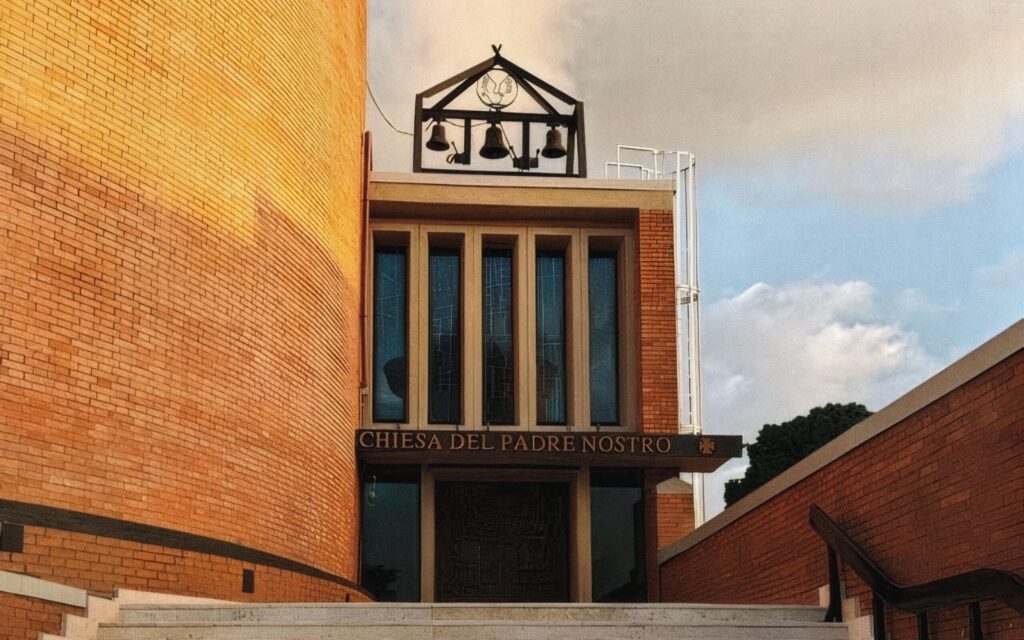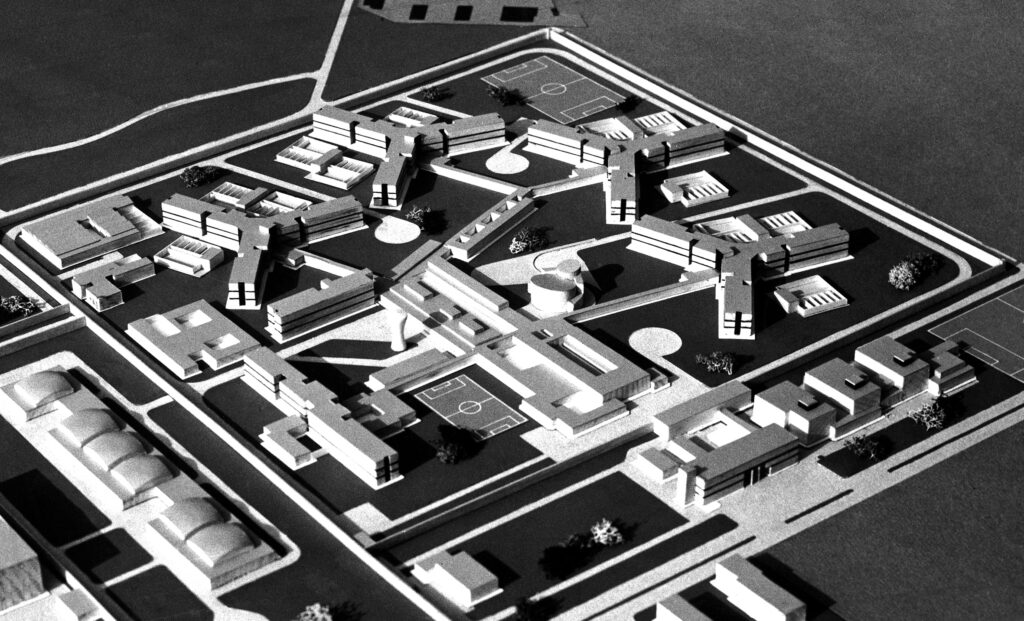The “Scala” of Football
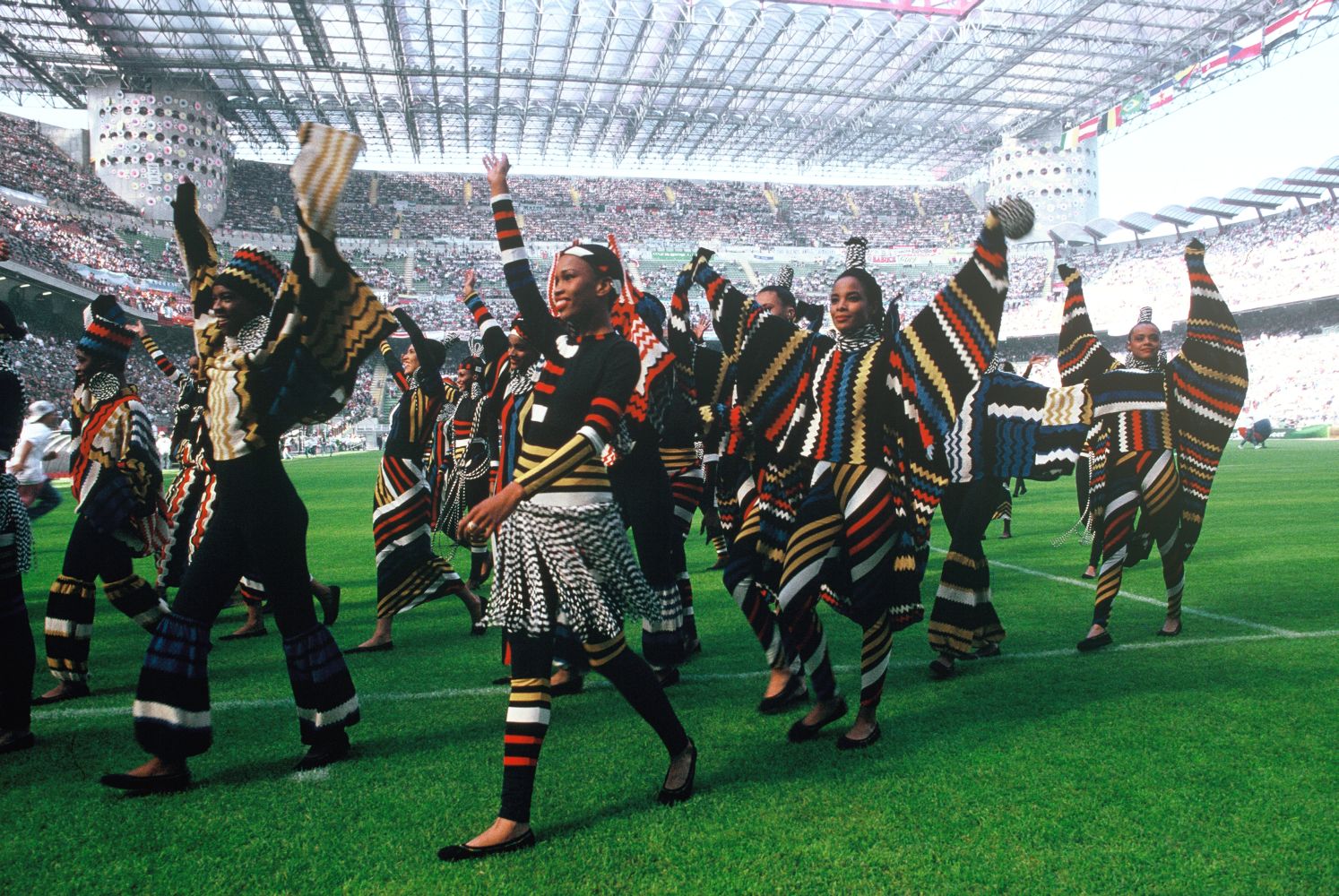
Two rows of trees line the boulevard, which extends westward from Piazzale Fratelli Zavatteri in a straight line, moving away from the contemporary gleam of the City Life neighbourhood, heading directly toward Via Novara, toward what, for a little while longer, remains the city of Milan. The jarring sound of the tram, its gradual accelerations, brakings, and the mechanical hiss of automatic doors opening and closing at each stop. Everything is part of the same journey—ordinary for some, intriguing for others—that, toward the end of Via Rospigliosi, reveals a square opening up beyond the windows, dominated by an imposing building, both elegant and rugged: the Giuseppe Meazza Stadium in San Siro.
For nearly a century, from 1926 to today, this structure has been part of Milan’s history and has come to represent it. It has carried the weight of embodying and narrating its most classic “Milanesità”, served as a symbol of its urban transformations, became the face of Italian football, and later an icon for a global audience. To this day, it remains one of the finest examples of 20th-century sports architecture. Approaching a century of life, however, the debate on its destiny has become far more unsettled, caught between the demands for a shiny, contemporary-looking new stadium, the scornful criticism of those who see football turning into a “couch” sport, the objections of residents who would gladly do without the weekly turmoil, and the protests of those who still hold certain architectures representing the city close to their hearts and don’t want to see them suddenly disappear.
Because the stadium—entitled since the 1980s to the legendary Giuseppe Meazza, a Milan native and a football champion—is a building born in an era that no longer exists. Back then, in the middle of lawns and cultivated fields in what, until just two years earlier, had been part of the municipality of Trenno, the then-president of AC Milan, Piero Pirelli, decided to build a structure that could host the club from that point forward. The advantage was twofold: the new stadium would be in perfect harmony with the adjacent Trotto Ippodromo, creating a potential avant-garde neighbourhood dedicated to sports. It was 1926. What, in period postcards, was simply called the “Football Stadium” was designed in the perfect style of British football grounds, with a capacity of 35,000 seats, complemented by mid-European Liberty and late neoclassical decorations—elegant yet restrained—reflecting the tastes and influences of engineer Alberto Cugini and architect Ulisse Stacchini, the minds behind the project.
To this day, it remains one of the finest examples of 20th century sports architecture.
The name San Siro came from the neighbourhood, which, in turn, drew its inspiration from a church near the stadium. Today, only the apse of the church remains, backed against one side of Villa Fossati, on Via Masaccio, just a few steps from Piazzale Lotto. The church, in Gothic Lombard style with Romanesque elements, traces its origins to paths not entirely clear, leading back to the early Christian era and the evangelisation of Milan around 1000 AD. The villa, known to the people of Milan as “Villa Triste”, evokes memories of imprisonment and torture during the Second World War. Today, however, it has returned to being a peaceful place, housing a small convent of the Sorrowful Mothers. It was precisely in that post-war period, which restored the villa to a more serene destiny, that a liberated and enthusiastic Italy got into football like never before. In Milan, Inter and Milan came together, with the former leaving the Arena Civica to share San Siro with the latter for their home games.
That was the time when the Milan stadium became a symbol of the city and the country. The extension completed in 1955 (engineer Calzolari and architect Ronca) expanded upon the concept of the cavea, which had been introduced in the 1930s (engineer Bertera and architect Perlasca). This transformation granted San Siro the majesty and iconic status that would be recognised in the years to come. The new second tier of bleachers, built above the existing first tier, added a structure that enveloped the building in a bundle of helicoidal ramps, hypnotic in their continuous flow, both elegant and unique, yet perfectly functional in distributing the audience to every sector.
As a vortex of reinforced concrete, the San Siro stadium rose as the centrepiece of the vast square. Between the 1960s and 1980s, it became increasingly filled with small cars parked in hundreds of orderly lines and marked by the constant passage of the massive steel snakes of trams moving back and forth from the city centre, bringing thousands of enthusiastic fans. This was the San Siro of Milan’s postcards. With the sun and the rain, in the darkness of the fascinating evening games as well as in the autumnal and foggy afternoons that gave the stadium’s profile a magical and unreachable quality, San Siro became the symbol of the city: the way of living it, of dressing, of the derby’s “almost friendly” rivalry, of the city’s urbanistic outburst. It reflected the era’s architecture, which sought to create new “peripheral centralities” with buildings that fell outside of classical schemes—rupture projects that were bold, explosive, and unique within the metropolitan skyline.
The world moves fast, and so does sport, and the Meazza had to adapt once again when the utopian magic of the 1990 World Cup arrived in Italy. The stadium was further expanded; it transformed, becoming an icon. That World Cup marked the final chapter of Italy amid the economic boom of the second post-war period, while also symbolising a country that was launching itself into the new millennium, squeezed between aggressive politics, the influence of TV and mobile phones, youth subcultures, and the utopia of the “la bella vita”. The extension carried out in preparation for 1990 was designed by architects Ragazzi and Hoffer, adding a third tier to the Meazza—a definitive step that presented it to the world as one of the most important stadiums in global football.
The ramp structure of 1955 is surrounded by 11 giant cylindrical towers that echo the same helical pattern, reaching all the way up to the roof, a standalone feature that was long debated, marked by red truss beams that protrude from the building’s profile like arrows pointing toward the future. Drawing from Milan’s classical style, the new San Siro is defined as the “Scala” of football, a contemporary theatre with over 80,000 seats that would witness Milan’s triumphs, the elusive and dreamy plays of Ronaldo the Phenomenon, and Champions League finals. «We’re going to the San Siro», say with joy and pride the British fans who fell in love with Italian football after 1990, thanks to the influx of champions to Serie A. From time to time, they have the chance to visit the Meazza to follow their team away against Inter or Milan.
The new San Siro is defined as the “Scala” of football, a contemporary theatre with over 80,000 seats that would witness Milan’s triumphs, the elusive and dreamy plays of Ronaldo the Phenomenon, and Champions League finals.
San Siro gave birth to chants that became tradition, like the one invented by Newcastle fans during their Champions League match in Milan in 2002: “Tell me ma, me ma… We won’t be home for tea, we’re going to Italy”, which had already been sung by the same fans during an away game against Milan the previous year. For international fans, a visit to San Siro becomes a lifetime memory to recount to friends back home. The third tier overhangs the pitch; the angular towers loom over the interior like a medieval castle, and the acoustics amplify and multiply the roar. The entire atmosphere creates such a formidable impact on players that the “weight of playing at San Siro” has become a characteristic often cited by the media when evaluating champions.
Some have the strength to face this challenge and those who never will. San Siro is now like Wembley or the Maracanã. The name alone is enough, and everyone knows what it refers to. After a century of life, after millions of spectators passing through the bleachers and thousands of games hosted, this giant of reinforced concrete is beginning to show its age in a football world with increasingly pressing demands. The neighbourhood that has grown over decades around the stadium is, almost paradoxically, detached from it. Today, as fifty years ago, the stadium remains an isolated monument at the centre of a vast tarmac plain. Its nature as an architectural “Russian doll” carries strengths and weaknesses that may be incompatible with a certain vision of football, one that demands services and comforts for fans who are seen more as tourists than true football lovers.
The compromises, both urbanistic and structural, remain the same, starting with the narrow Via Piccolomini – a fascinating glimpse that separates the stadium from the former Trotto Ippodrome on the east side (and because of which the Orange Tribune is the only one still double-tiered). However, it won’t accommodate drastic changes in the event of a restoration. Today, it’s hard to imagine San Siro having much of a future as it stands, at least if left untouched. At the same time, it invites bold, ambitious, and creative thinking about its potential transformations.

In autumn 2020, following the verdict (now rendered ineffective) of the Soprintendenza regarding the «lack of cultural value for San Siro», the Guardian published an article that, on the contrary, celebrated the epic and intrinsic meaning of the structure. It highlighted it as an eloquent rebuttal: «The Italian heritage authority has no objections to San Siro being flattened. They don’t know their history». Yes, because the Meazza is part of history—a history respected by the world, perhaps even more so than by Italy itself. It is the history of an architectural evolution that is gradual and coherent, with an iconic character that cannot be forgotten.
Chosen by The Times as the second most beautiful stadium in the world in 2009, today San Siro is also one of the five most searched-for and visited attractions in Milan by tourists. This is not only due to football but also its proximity to the Ippodromo Snai, home to the splendid reproduction of Leonardo da Vinci’s horse. There’s an image that is particularly striking in understanding what San Siro represents outside of Italy: in the small, humble suburb of Makassar in Indonesia, kids play barefoot in the sand, mud, and on metal sheets, where the football goals are painted on the walls, and a large inscription reading “SAN SIRO” towers over one of the courtyard’s walls.
Here’s how far the third tier reaches. Despite the debates and conflicting opinions, San Siro remains one of the places that best tells the story of modern Italy, embodying its passion for football and great concerts. It has become famous and loved around the world while simultaneously reflecting the fashion and societal shifts of Milan in the 20th century. San Siro has gone beyond the architectural sense of the work itself. It is one of those structures that have accompanied our lives.
